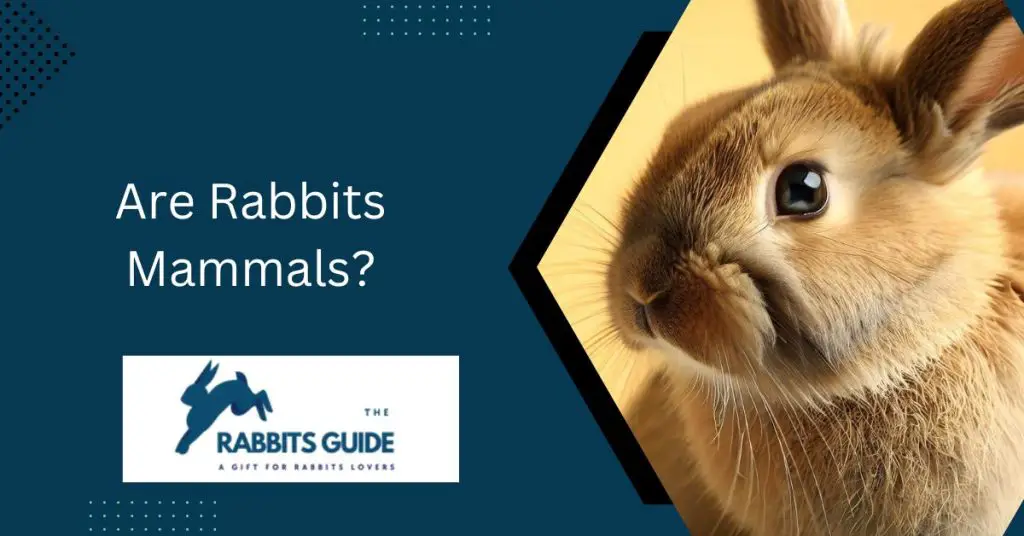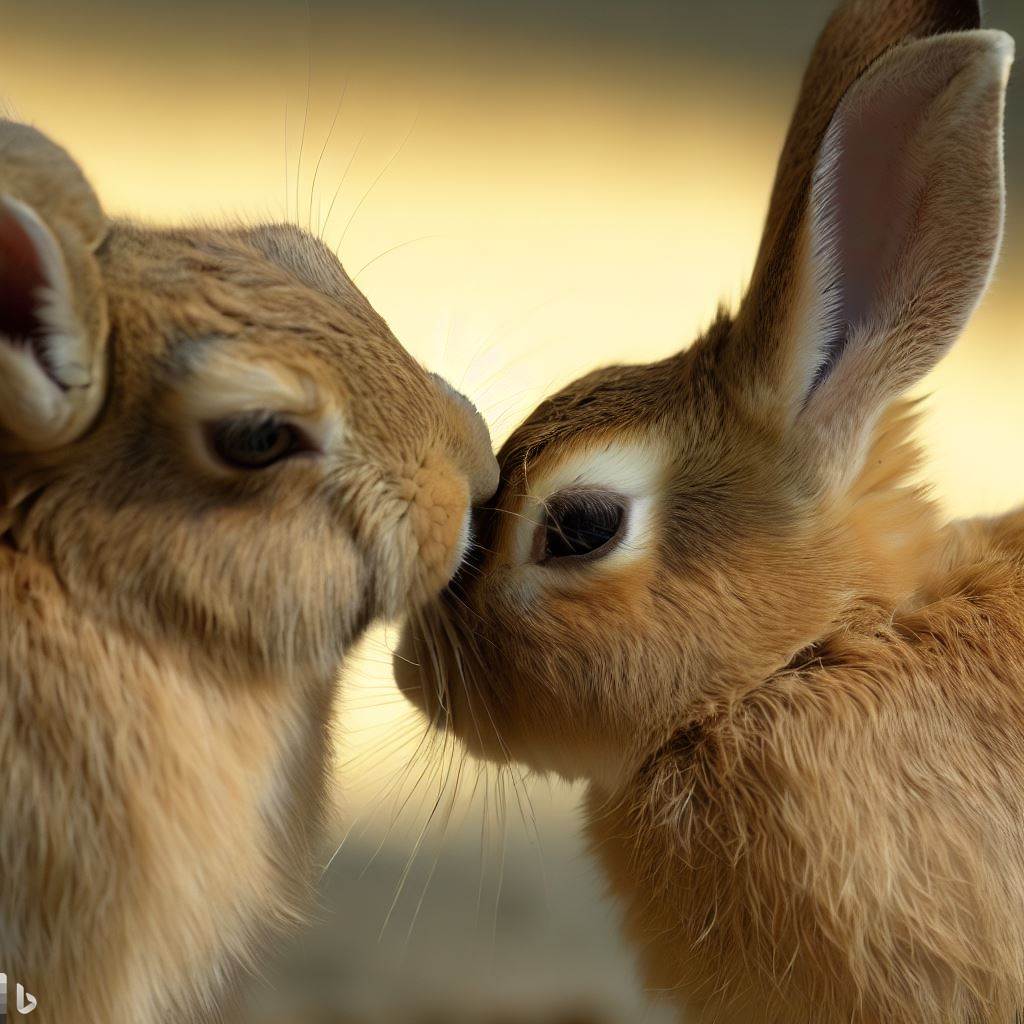Last updated on April 18th, 2024 at 11:29 am
Discover Are Rabbits Mammals? in this concise guide. Uncover the fascinating traits that categorize these adorable creatures within the mammalian
Introduction
We will explore the characteristics that define mammals and how rabbits fit into this classification as we explore the fascinating creatures that capture the curiosity of children and adults alike. To answer the question, “Are rabbits mammals?” we will examine the defining characteristics of mammals. To determine the status of rabbits in the animal kingdom, we need to understand the features that make them mammals.
Are Rabbits Mammals?
Yes, rabbits are mammals. Mammals are a class of vertebrate animals characterized by mammary glands that produce milk for feeding their young and have hair or fur on their bodies. Rabbits belong to the order Lagomorpha, which also includes hares and pikas. They have characteristics typical of mammals, such as being warm-blooded, having a four-chambered heart, and giving birth to live young (rather than laying eggs). Additionally, rabbits possess other mammalian features, like having internal fertilization, a well-developed respiratory and circulatory system, and the ability to regulate their body temperature.

Characteristics of Rabbits as Mammals
The rabbit is a fascinating mammal that belongs to the mammalian family. As mammals, they have several unique characteristics that make them stand out from other species.
Here are some notable features and traits of rabbits as mammals
Warm-blooded
As warm-blooded mammals, rabbits can regulate their body temperature internally regardless of the external conditions. They can thrive in a wide variety of environments because of this ability.
Hair and Fur
Among rabbits’ defining traits is their dense fur, which serves multiple purposes. The fur provides insulation, helping rabbits retain body heat, especially during colder seasons. In addition, it serves as camouflage, allowing them to hide from predators and blend into their surroundings.
Mammary Glands
Young rabbits rely on their mothers’ milk for sustenance during their early lives, as all mammals possess mammary glands. These glands produce milk that helps to nourish their young.
Live Birth
The female rabbit, called a doe, delivers a litter of baby rabbits after a gestation period of approximately 30 to 35 days, a characteristic common to most mammals. Newborn kits depend on their mother for warmth, protection, and nutrition as they are born undeveloped.
Internal Fertilization
A rabbit reproduces by internal fertilization, meaning the male buck transfers his sperm to the female buck. Fertilized eggs grow internally within the female before becoming young rabbits.
Specialized Dentition
This characteristic is known as dental or hypsodont teeth in rabbits. They have unique teeth that grow continuously throughout their lives. Grass and leaves comprise most of their diet and are efficiently chewed and ground by their front incisors, which are particularly prominent and proliferate.
Herbivorous Diet
It is strictly a herbivore, so it consumes plant material primarily. They have a specialized organ called the cecum, which aids in breaking cellulose-rich food through fermentation. Their digestive system is adapted to extract nutrients from fibrous vegetation efficiently.
Highly Developed Senses
Rabbits have excellent hearing and can rotate their ears independently to detect sounds from different directions, which is essential for survival. Their large eyes provide a wide field of vision, allowing them to detect potential predators.
Burrowers
Burrowing is a skill that many rabbit species possess. They dig complex underground tunnels and chambers, known as burrows, that serve as shelter, shelter from predators, and a place to raise their young.
Social Behavior
A rabbit is a social animal that lives in groups or colonies. They communicate through body language, vocalizations, and scent marks.
These characteristics collectively contribute to rabbits’ remarkable adaptability and survival as mammals. Their unique traits and behaviours have allowed them to thrive in a wide range of habitats worldwide, making them one of Earth’s most successful mammalian species.

Mammalian Communication in Rabbits
Studies of rabbit communication have revealed complex ways these furry creatures communicate and interact. The rabbit communicates with one another primarily through visual, vocal, and olfactory cues. As rabbits are highly aware of body language and facial expressions, visual cues play a significant role. They convey messages using different postures, ear positions, and tail movements. In contrast, a hunched posture with flattened ears signifies fear or submission, whereas a relaxed posture indicates calmness. A rabbit can also communicate with others through various vocalizations, including purring, growling, honking, and screaming. Each of these vocalizations serves a specific purpose. Rabbits use scent-marking behaviours and chemical signals from urine and feces to establish territories, identify individuals, and convey reproductive status.
Mammalian communication in rabbits involves a variety of sensory modalities, making it a complex system. Their visual, vocal, and olfactory signals can effectively communicate information about social hierarchy, mating behaviour, territorial boundaries, and emotional states. We can better appreciate the innovative ways mammals interact with one another by understanding the intricacies of rabbit communication.

Rabbit Characteristics
Rabbits are small mammals known for their soft fur, long ears, and hopping movements. They belong to the family Leporidae and are found in various parts of the world.
Here are some critical characteristics of rabbits
Size
A rabbit’s size can vary depending on the species. From small rabbits weighing a few pounds to larger breeds weighing up to 20 pounds, rabbits come in all shapes and sizes.
Body Structure
Their hind limbs are strong, and their tails are short. Their front limbs are shorter, and they use them for digging and grooming.
Ears
The long, upright ears of rabbits are one of the most distinctive features of the animal. They are used for detecting sounds and regulating body temperature, among other things.
Fur
The colouration of rabbits’ fur provides camouflage and protection from predators and enhances their ability to blend into their natural surroundings.
Teeth
Throughout their lives, rabbits grow a set of sharp incisors they use to gnaw on vegetation and other materials.
Diet
Rabbits’ digestive systems quickly process plant material since they are herbivores. They feed mainly on grass, hay, and leafy plants.
Reproduction
The rabbit has a high reproductive rate. It has a short gestation period, typically around 30 days, and produces multiple litters yearly. A baby rabbit is called a kit.
Behaviour
It is also known for its agility and speed. Rabbits are social animals that perform various behaviours, including hopping, digging, and thumping their hind legs as a warning signal.
Habitat
Forests, meadows, grasslands, and deserts are all habitats where rabbits live. Some species of rabbits nest in shallow burrows.
Lifespan
Wild rabbits have a shorter lifespan because of predation and other environmental factors, whereas pet rabbits can live up to 12 years.
Rabbit Scientific Name
The scientific name for the rabbit is Oryctolagus cuniculus. The genus name, Oryctolagus, is derived from the Greek words “cryptos,” meaning “digger” or “borrower,” and “logos,” meaning “hare.” The species name, cuniculus, is derived from the Latin word for “rabbit.”
The rabbit, scientifically known as Oryctolagus cuniculus, is a small mammal belonging to the family Leporidae. It is a popular and well-known animal found in various habitats worldwide. The scientific name provides a standardized way to identify and classify this species in the animal kingdom.
The Oryctolagus genus includes only one species, cuniculus, representing the ordinary rabbit found in domestication and the wild. Rabbits are known for their small size, long ears, and powerful hind legs. They have adapted to diverse environments, including grasslands, forests, and deserts.
The scientific name of the rabbit, Oryctolagus cuniculus, reflects its biological characteristics and evolutionary history. The name highlights the rabbit’s burrowing behaviour, an essential characteristic of this species. Rabbits are excellent diggers, creating complex burrows known as warrens for shelter and protection from predators.
Understanding the scientific name of a species like the rabbit allows scientists, researchers, and enthusiasts to communicate effectively and avoid confusion when discussing different organisms. It also helps identify the rabbit species accurately and study its behaviour, ecology, and evolutionary relationships with other organisms.

Affirming Rabbits’ Classification as Mammals
Several characteristics define animals into different groups, and rabbits possess all the characteristics that classify them as mammals.
Mammalia, the class to which rabbits belong, consists of specific traits unique to mammals. Female rabbits nurse their young with milk, a clear sign that they are mammals. These features include the presence of mammary glands, which produce milk for nourishment.
Rabbits have a dense coat of fur that helps them regulate their body temperature and protects them. This is another distinguishing characteristic of mammals. The fur comprises highly sensitive tactile organs called whiskers, which aid spatial awareness by regulating temperature.

Why are rabbits, not rodents?
Because rabbits are members of the order Lagomorpha, whereas rodents belong to Rodentia, they aren’t. Although rabbits and rodents share some similarities, such as their small size and herbivorous diet, they have distinct anatomical and physiological differences that classify them into separate taxonomic groups.
What are rabbits classified as?
Rabbits belong to the order Lagomorpha and the family Leporidae. They are further divided into different genera and species, such as Oryctolagus cuniculus, which is the most widespread in domestication.
Is rabbit halal in Islam?
According to Islamic dietary laws, rabbits are generally considered halal (permissible) to consume. However, it is essential to note that the specific method of slaughter must follow Islamic guidelines, ensuring that the animal is slaughtered by a Muslim using a sharp knife and the name of Allah (God) is invoked during the process.
How are animals classified?
Various living organisms are classified according to taxonomy, which divides organisms into kingdoms, phyla, classes, orders, families, genera, and species. The characteristics of animals are classified according to their physical characteristics, genetic relationship, and evolutionary history. Scientists can better understand their diversity by categorizing and understanding animal species and how they relate to one another.
Conclusion
Rabbits are mammals. As members of the animal kingdom, rabbits belong to the class Mammalia, distinguished by their warm-blooded nature, hair, and fur, mammary glands that produce milk for their young, and specialized jaw structures with a variety of teeth. All of these characteristics are exhibited by rabbits, along with other mammalian traits such as giving birth to live young and having a highly developed respiratory and circulatory system. Rabbits are mammals, so there can be no doubt about this.
